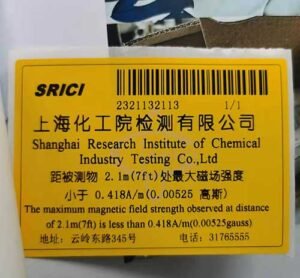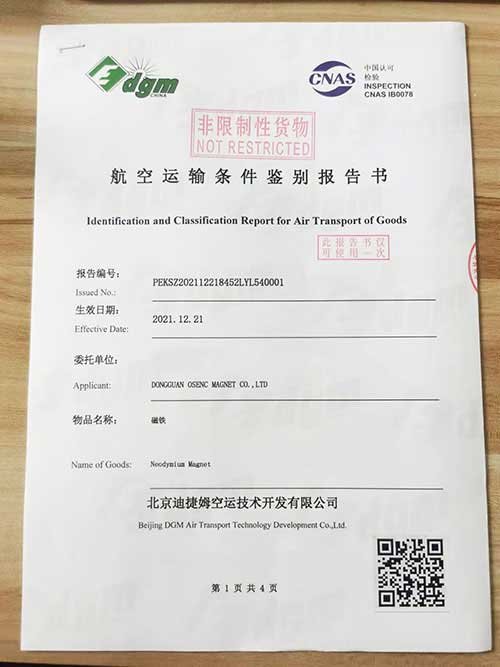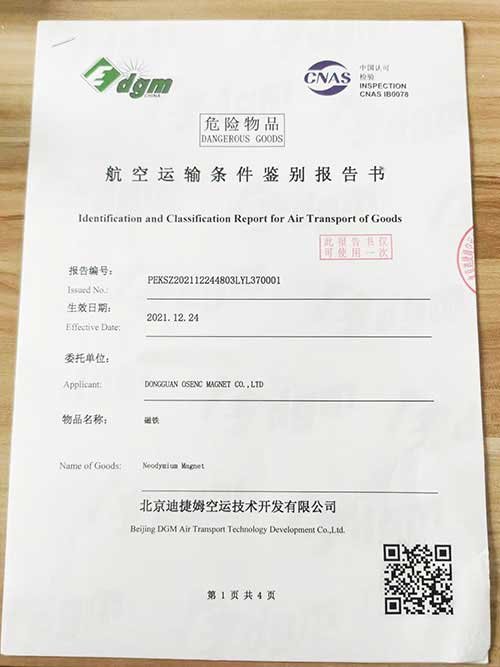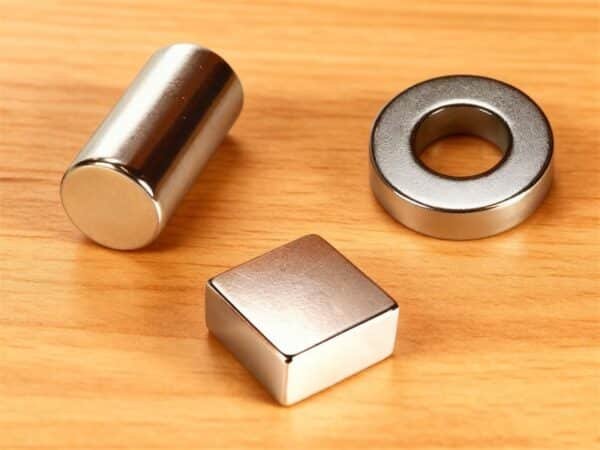When I first started in the industry, I was told I needed an IATA Report while working on air freight. Recently, a friend wants to join my industry, and yesterday he asked me what an IATA Report is. After checking the latest information yesterday, I wrote an article specifically to help you.
What Is The IATA Report?
IATA Report, the full name is Identification And Classification Report for Air Transport of Goods. An “IATA Report” is any official publication from the International Air Transport Association (IATA), which issues various reports on commercial aviation. The IATA Annual Safety Report is a publication by the International Air Transport Association (IATA) that compiles, monitors, and analyzes aviation accident data. Since 1964, it has become a key resource for improving safety in commercial aviation. That is a very important report in magnet shipping. People can not ship magnets by air without it.
Shipping neodymium magnets by air is not easy. Even though we ship hundreds of packages every year, there are still some products that can’t be shipped by air – for example, a big magnet. (In some cases, for magnets of the same size, an individual piece can not pass the test, but 2 pieces in a pack will have no problem for shipping by air. That’s another story about magnetic field).
As we know, big magnets field will interfere with the electronic equipment and navigation on planes. That’s why many industrial magnets and magnetic assemblies cannot be shipped by air.
That is why people prefer to ship magnets by vehicle or by sea. Because magnets shipped by air will be easy to classify as Dangerous Goods if they have not been packed well to block their magnetism. Additionally, many carriers will not accept magnets for air shipments.
In fact, magnets can be shipped by air, if we follow some guidelines that explain how magnets should be properly packaged and obtain IATA reports from some certified labs.

How to Get a DGM / IATA Report in China?
In China, a DGM / IATA Dangerous Goods Report is obtained by sending product samples and documents (like MSDS and packing details) to a certified lab such as DGM China, SGS, Pony, Intertek, or CTI, where they test the cargo according to IATA DGR rules (e.g., magnetism or battery safety); the process usually takes 2–5 working days (express service 1–2 days) and costs about RMB 800–2000, after which the report is issued and can be used for customs clearance and airline acceptance.
What IATA Reports Say About Magnet Shipping
IATA Packing Instruction 953 states magnetised material will be accepted only when:
- Devices such as magnetrons and light meters have been packed so that the polarities of the individual units oppose one another
- Permanent magnets, when possible, have keeper bars installed
- The magnetic field strength at a distance of 4.6 m (15 ft) from any point on the surface of the assembled consignment
- Does not exceed 0.418 A/m (0.00525 gauss), or
- Produces a magnetic compass deflection of 2 degrees or less
IATA Packing Instruction 953 Explained
IATA Packing Instruction 953 explains how airlines handle magnetized cargo, and according to the magnetized material regulations, any package that produces a magnetic field greater than 0.00525 gauss (0.159 A/m) at 4.6 meters is considered restricted and must be declared as UN 2807; if the field strength is below this threshold, the goods can be shipped as “Not Restricted,” provided there is a test report. In practice, shippers need to follow IATA Packing Instruction 953 by testing products like motors, magnets, or speakers, shielding them if necessary, and ensuring labeling and documentation meet the magnetized material regulations to avoid rejection by airlines.

What Is The IATA Report Like?
There are some labs or inspection companies that offer IATA report services. If the parcels pass the inspection, they will issue reports like below, with “NOT RESTRICTED”. That means DHL, FedEx, UPS can pick up the parcels and ship them by air.

If the parcels fail this inspection, they will mark it “DANGEROUS GOODS”, which means we need to repack them and make an inspection again or choose another way to ship the parcels.

FAQ
What kind of insights does IATA provide?
IATA offers reliable and up-to-date data solutions that help organisations understand aviation industry trends. These insights cover both micro and macro levels, enabling deeper analysis, forecasting, and decision-making.
What does IATA stand for?
IATA stands for the International Air Transport Association, a global trade association for the world’s airlines. It plays a key role in setting standards, providing data, publishing reports like the Annual Safety Report, and offering insights and forecasts that improve safety, efficiency, and sustainability in the aviation industry.
Who needs an IATA certificate?
An IATA certificate is typically required by professionals and organizations working in aviation, travel, and logistics.
How to Pack Magnets for Air Shipping
How to Pack Magnets for air shipping starts with testing the magnetic field to ensure it meets IATA limits; if the strength exceeds 0.00525 gauss at 4.6 meters, the shipment falls under UN 2807 magnetized material regulations. To comply, wrap each magnet securely, use non-magnetic cushioning like cardboard or foam, and, if needed, add steel plates or keepers to shield the field. Finally, place the items in a sturdy outer carton, label according to IATA Packing Instruction 953, and include a magnetism test report so airlines will accept the cargo safely.
Reference:

I’m Ben, with over 10 years in the permanent magnet industry. Since 2019, I’ve been with Osenc, specializing in custom NdFeB magnet shapes, magnetic accessories, and assemblies. Leveraging deep magnetic expertise and trusted factory resources, we offer one-stop solutions—from material selection and design to testing and production—streamlining communication, accelerating development, and ensuring quality while reducing costs through flexible resource integration.


